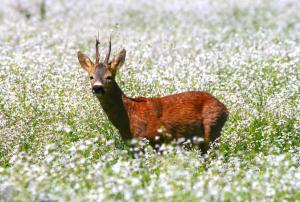
Grants
Biodiversity
MAPAT – Mammals of Protected areas of Tuscany
€10,000 awarded
TEF has awarded €10,000 to the Department of Life Sciences at the University of Siena for an important monitoring program of the mammals of Tuscany’s protected areas.
The program’s main findings are the following:
Over the last 40 years in Central Italy, there has been a notable increase in the population of large mammals due to the abandonment of rural areas, allowing forests to regrow. However, this surge raises concerns as excessive large mammal populations, such as deer, can negatively impact the environment by damaging vegetation, spreading diseases, and causing conflicts with humans, such as agricultural damage and road accidents. In the MAPAT project conducted by the University of Siena, researchers focused on medium to large mammals, including predators like wolves and various ungulates like deer and boars, in protected areas of Tuscany. Using methods like camera trapping, they assessed mammal diversity and its relationship with ungulate numbers. The study revealed a diverse mammal community, with up to 12 species identified across the areas. While some species were consistently found in all areas, discrepancies with official lists were noted, suggesting variability in species distribution and possibly underestimation of certain species due to their elusive nature. The study highlighted the importance of habitat diversity, with mixed habitats supporting more mammal species. Interestingly, a negative correlation was observed between fallow deer presence and other mammal species, potentially due to resource competition. Additionally, the study found habitat preferences for different species, with wild boars favoring ecotonal environments close to forests and roe deer showing a preference for oak forests and shrubby areas. Overall, the research provided valuable insights into mammal populations, their habitat preferences, and interactions, emphasizing the need for continued monitoring to understand population dynamics and mitigate potential ecological impacts.

